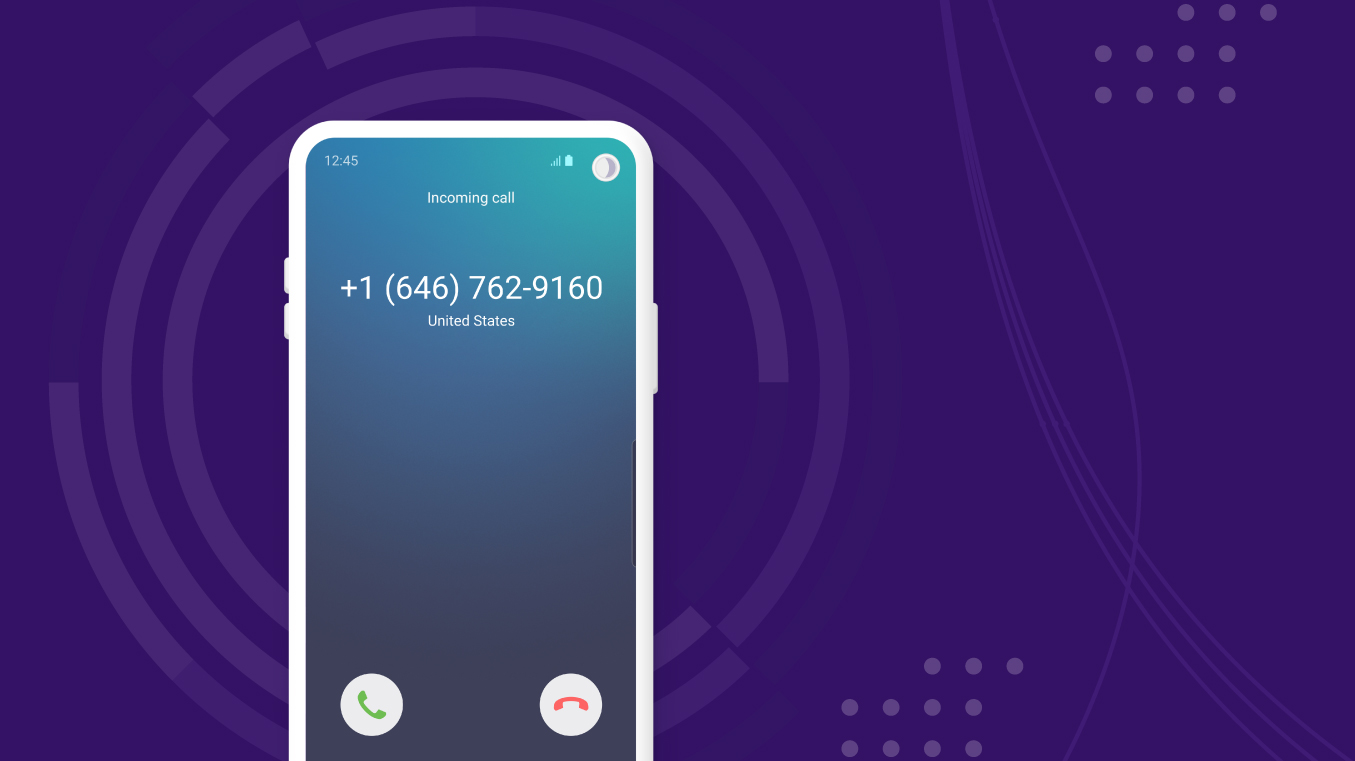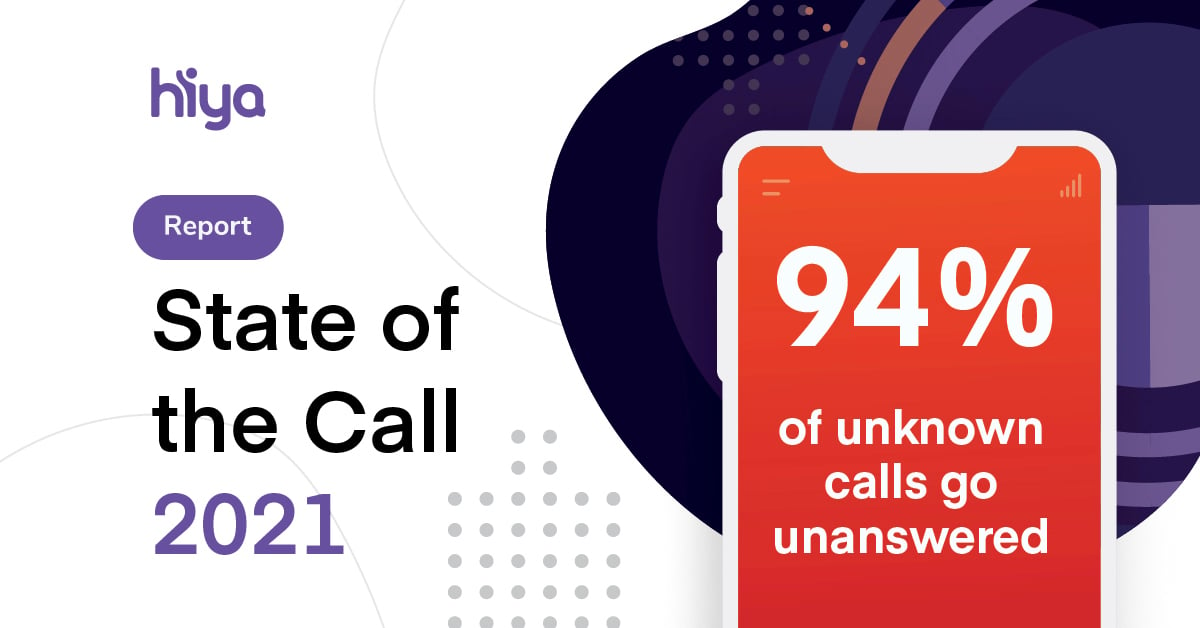
Unexpected and often unplanned, random telephone calls throughout the day pull you and your employees away from vital tasks. But while these calls may be disruptive, they are often a necessary part of doing business. After all, customers, remote employees, vendors, and others need to be able to connect with you, even if that means occasionally pulling you away from other tasks.
But what about when the person on the other end isn’t a person at all?
Robocalls are the worst. When you set everything aside to answer a ringing phone, only to be met with a prerecorded, robotic message, there is no upside. And on a larger scale, these calls are also harming businesses’ ability to effectively reach out and connect with consumers. To combat robocalls, as well as the scams, spam, and fraudulent practices they support, you first need to know what’s at stake.
Here, we dive into the reality of robocalls — what they are, how they impact your business, and how to block robocalls once and for all.
What is a robocall?
Robocalls (sometimes referred to as automated calls) are calls that deliver a prerecorded voice message. These calls are usually initiated by predictive-dialer computer programs called autodialers. Once the incoming call is answered, the program automatically begins playing the prerecorded message.
Many kinds of robocalls serve legitimate functions. Appointment reminders, emergency notifications, educational institutions reaching out about unexpected absences or school closures — in each of these cases, robocalls allow organizations to deliver important information easily, directly, and automatically.
However, robocalls are often put to less legitimate uses.
What happens if you answer a robocall?
Answering a robocall poses various risks to consumers, including confirming to scammers that the phone number is active and owned by a real person. This could potentially lead to more unsolicited calls or texts.
Engaging with robocalls also increases the likelihood of falling victim to scams, including identity theft, financial fraud, and phishing schemes. These calls often employ sophisticated tactics to deceive individuals into divulging sensitive information, from bank details to personal data. Additionally, some robocalls may attempt to install malware or viruses on the recipient’s device, further compromising their privacy and security.
Answering robocalls can expose consumers to various threats, so it is important to exercise caution and utilize strategies like call blocking to mitigate these risks. Even if consumers answer a robocall, they can use these tips to protect themselves.
1. Hang up
Hanging up as soon as possible is important because it immediately severs any potential interaction with the robocall. By ending the call promptly, individuals reduce their exposure to potential scams, fraud, or attempts to gather personal information.
2. Avoid saying “yes”
Saying "yes" to a bot in a robocall can have severe consequences. Scammers may record affirmative responses and misuse them to validate transactions, change account settings, or sign up for services without the victim's consent. This tactic can lead to identity theft and unauthorized charges. It can even lead to legal ramifications if the recorded "yes" is used to misrepresent agreement to terms or contracts.
3. Don’t follow the instructions
Following instructions on a robocall poses significant risks, and these instructions may lead to downloading malware. The instructions could also cause the consumer to provide access to sensitive information or engage in activities that compromise security or privacy. By disobeying these directives, individuals can avoid falling into traps set by scammers.
4. Avoid giving personal information
Giving personal information to a robocaller opens the door to identity theft, financial fraud, and other forms of exploitation. Scammers can use this information to impersonate individuals and access their financial accounts. It's crucial for individuals to never disclose sensitive information such as Social Security numbers or passwords over the phone to unknown entities.
5. Report the call
Finally, reporting robocalls is essential to help authorities track down and take action against scammers. Individuals can report robocalls to the Federal Trade Commission (FTC) in the United States or similar regulatory bodies in other countries. Additionally, many phone service providers offer tools or services for reporting and blocking unwanted calls. By reporting robocalls, individuals contribute to efforts to combat telephone scams.
Are robocalls illegal?
Robocalls haven’t gone unnoticed by the Federal Trade Commission (FTC); various laws exist to protect individuals and groups from harassment from automated-dialing programs.
The FTC website says this about robocall legality:
“A robocall trying to sell you something is illegal unless a company has your written permission to call you that way. To get your permission, the company has to be clear it’s asking to call you with robocalls, and it can’t make you agree to the calls to get a product or service. If you give permission, you have the right to change your mind later.”
In other words, businesses need explicit permission in order to try to sell you products through robocalls. That said, there are certain exceptions. For example, political campaigns and charities asking for donations do not legally require your permission to use robocalls, and neither do debt collection calls or calls from healthcare providers. Additionally, calls that are purely informational without requesting any payment are likewise unrestricted.
Congress recently passed the TRACED, (Telephone Robocall Abuse Criminal Enforcement and Deterrence) Act, which raises the fine on spam robocalls to as much as $10,000 per illegal call. Unfortunately, even with laws on the books designed to deter robocallers, robocalls keep coming.
Hiya’s 2021 State of the Call research reports a total of 157.4 billion spam and fraud calls were received in North America and Europe in 2020. And, because so many of these calls consist of spam messages, scams, and illegal sales tactics, the callers have no compunction about reaching out to numbers on the National Do Not Call Registry.
How robocalls hurt business
It takes about 23 minutes to recover and refocus after a single work interruption, and employees tend to compensate for interruptions with rushed, less-accurate work. Frequent robocalls hinder productivity and may be costing your business significant amounts of money.
Scammers target businesses
Individuals are not the only ones who can fall victim to robocalls — fraudsters target businesses as well. Google business listing scams are a type of robocall that manipulate payments from businesses by claiming that their listings are incomplete and in danger of being taken down. Local map verification scams swindle businesses into handing over private information.
Call recipients are skeptical
Beyond hurting productivity or tricking businesses out of money or sensitive information, robocalls also have an extremely negative effect on how consumers respond to incoming calls. Approximately 94% of people are now hesitant to answer unidentified calls, and 26% of call recipients have trouble immediately distinguishing automated calls from real human callers. The U.S. Federal Communications Commission (FCC) even cautions consumers not to answer calls from unknown numbers.
Consumers are becoming increasingly distrustful of calls from unknown numbers. Legitimate businesses are getting reported as spam because the customers don’t know who is calling. To make matters worse, 56% of businesses overall don't actually know whether their calls have been flagged as fraud.
Fraudulent calls may be drowning out your ability to connect with your customers. Fortunately, you don’t have to take a passive role in the fight. There are steps you can take to help ensure that all of your communications are trusted by recipients.
How to prevent robocalls
Businesses that want to prevent or limit incoming robocalls have similar options to consumers. For one, they can simply not answer unidentified calls, although this still presents a distraction from productive work, and may create problems when important incoming calls fail to provide caller ID information or end up inaccurately flagged as fraudulent.
Businesses can also use call-blocking systems or third-party apps to intercept automated calls and prevent them from causing distraction. Androids and iPhones include options to automatically stop smartphones from receiving suspicious calls.
Addressing the impact from robocalls on contact-center answer rates demand a more tactful approach. Here are several ways businesses can help ensure calls are getting through to customers.
Use real, assigned numbers, and maintain an accurate caller ID
Some of the criteria carriers look for when flagging, or even automatically blocking, potentially fraudulent calls are invalid or unused numbers. Use real numbers, and provide as much relevant information as possible in your caller ID. This will help prevent the number from being erroneously flagged, and will give customers the information they need to decide whether they wish to answer your call.
Use specific numbers for specific departments and services
If you’re using the same number for all of your outbound calls, you are more likely to get flagged. This is likely because as consumers see the same phone number showing up with increased frequency, they often mistake that number for a robocaller and report it. Giving each department its own assigned number allows you to reach out to customers without inundating them with too many calls from a single source.
Try to only call assigned numbers
Robocalls thrive by casting a wide net, and often call invalid and unassigned numbers while trying to locate possible human targets. Businesses that frequently make out-going calls to unassigned numbers may catch the attention of telephone carriers, getting flagged in the process.
Be compliant with laws and willing to work with service providers
Analytics companies and service providers are actively trying to eliminate illegal robocalls. Businesses can help by providing them with documentation detailing regular calling patterns (this should include anticipated call volume as well as standard calling hours). Likewise, adhere to the Do Not Call List and remain compliant with relevant laws and regulations. Provide contact information so that call recipients can report any perceived violations. Taking these steps demonstrates your willingness to help, and further distinguishes your businesses from illegitimate callers and scam artists.
Use Hiya Connect
As one of the most trusted names in caller identification and blocking, Hiya provides the complete range of tools and services you need to ensure that your calls are getting through to the people who matter. Hiya Connect empowers businesses to register legitimate phone numbers and take increased control over how those numbers appear in caller ID. At the same time, Hiya users can include company logos, as well as details describing the reason for the call.
Hiya also offers powerful reputation monitoring and management services, providing detailed reports on which of your numbers are being blocked or reported, helping you dispute unwarranted flagging, and giving you a clear view of how your call-reputation is growing and changing over time.
Finally, Hiya’s security offerings are essential tools for protecting your business reputation, authenticating calls, terminating scam contacts, and preventing illegal actors from spoofing your legitimate telephone numbers. With Hiya Connect, you can protect your business and your customers, and help make illegal robocalls a thing of the past. Click here for a free demo of what Hiya Connect can do for you.
Final thoughts
Robocalls are a serious concern for businesses and customers alike. Hiya offers an effective solution, giving organizations a reliable way to stand out and reach their customers. After all, business depends on the ability to connect. And with Hiya, everyone involved can operate secure in the knowledge that the person on the other end of the line actually is a person, and what they have to say is worth listening to.
Want to learn more about what robocalls and more mean for your business? Check out Hiya’s State of the Call Report for the latest trends in voice.




